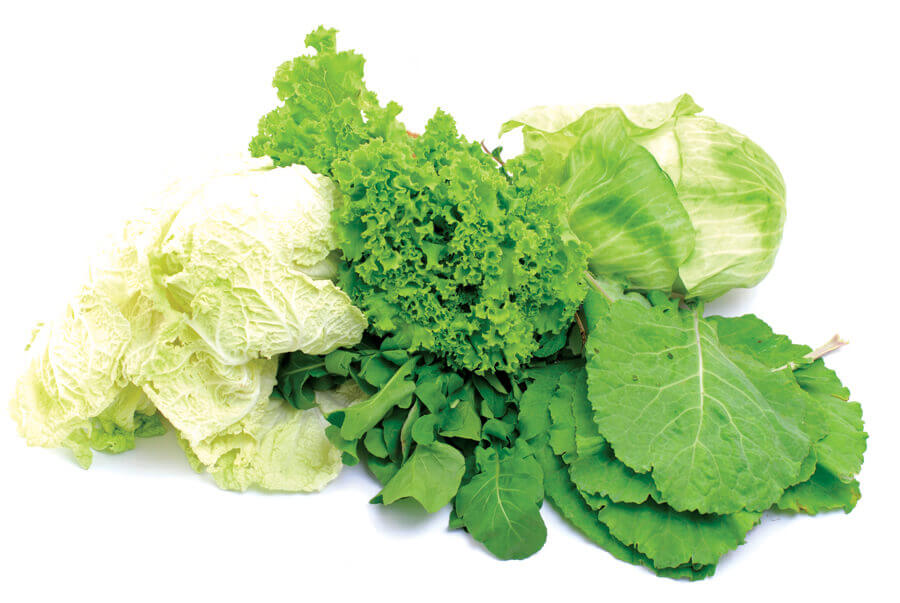Cold weather is not the only thing just around the corner. You never know when disaster will strike… from a devastating natural disaster to civil unrest and chaos.
So, just because cold weather is around the corner doesn’t mean you need to put away your rake, soil and seeds. For most gardeners, the late fall brings the last harvest of the season, but if you prepare your vegetable patch properly, you can continue to produce quality food for your stockpile through the frost and beyond. Here are some tips to help you reap the rewards of your survival garden this winter.
If you don’t have the right type of outdoor soil for gardening or you simply don’t have the space, you can grow certain types of vegetables inside during the winter. In many cases, if you have the right amount of sunlight in your home, you can grow all of the winter crops in a container, including lettuce, herbs, peas, carrots and radishes. If you’re short on sunlight, you can invest in a halide lamp, which will offer your plants more light.
“ … just because cold weather is around the corner, doesn’t mean you need to put away your rake, soil and seeds.”
LATE AUTUMN, EARLY WINTER
The late autumn yield from your garden should still be rich with tomatoes, peppers and peas, especially if you picked the first round in late summer and quickly repaired and replanted in your beds. These canning and stockpile essentials can be kept hardy even through a light frost with a portable greenhouse or homemade covering. Many nurseries and hardware stores, in addition to online seed companies, offer several inexpensive covers for winter seed and frost gardening cultivation. Make sure you scoop out the seeds from these fruits and vegetables, allowing them to dry for up to two weeks before storing. Your family table should be topped with squash, pumpkin and cucumber delights from your earlier harvest right now. It’s essential that you collect the seeds while preparing or dividing these vegetables and gourds for your pantry.
Occasionally, gourd and squash seeds do not produce the same quality season after season, so it’s always a good idea to purchase new seeds just in case. Pumpkin seeds are also a wonderful cold day snack when toasted over a fire and sprinkled with salt; thus, they do the double duty of being both a future crop and treat.
“Turnips, lettuce and collard greens will grow very well in winter.” —Tony Avent, Plant
Delights Nursery, Raleigh, North Carolina

PLANTING WITH FROST IN MIND
Most greens used both in salads and for cooking will flourish in a cold climate, and they can be counted on in bleak times to bring a bounty of healthy food to your table and pantry. “Turnips, lettuce and collard greens will grow very well in winter,” says Tony Avent of Plant Delights Nursery in Raleigh, North Carolina. If you haven’t already, now is a good time to sow your leafy greens seeds. To ensure plentiful results, plant a variety of cold-loving greens. It’s a good idea to cover the soil with a light mulch to keep the dirt around the seeds warmer and protected from frost. The greens will thrive in a colder climate, but a covering might prove helpful to increase the produce yield. With a watchful eye and careful touch, your survival garden will be full of lettuces all winter long.

OVERWINTERING YOUR GARDEN
After you have harvested your fall crops, you can begin “overwintering” your garden. Overwintering means planting and preparing your beds for your early spring vegetables. After you adapt the recently harvested soil, root and bulb vegetables like carrots, turnips, beets, onions, garlic and rutabagas are all excellent products to sow in your space for overwintering. They will need to be in the growing process before you cover the soil with a layer of mulch and may look lackluster and dreary for a while. Broccoli and cauliflower as well as leafy greens like spinach, kale and chard can also be planted now.
COVERS FOR SEEDS
You can find these at many nurseries and hardware stores and online seed companies.
WHAT COVERS DO
These covers offer protection from frost.
PLAN AHEAD
Make sure you scoop out the seeds from fruits and vegetables, allowing them to dry for up to two weeks before
storing.
BRING IN THE NEW
Occasionally, gourd and squash seeds do not produce the same quality season after season, so it’s a good idea to
purchase new seeds.
PRODUCE: WINTER, SPRING
When the days begin to get longer and winter is waning, your survival garden will begin to emerge again with many tasty veggies. As the temperatures begin to rise and only a light frost comes at night, it’s time to brush away the heavy dirt and let your plants grow. Your winter garden will produce an early spring harvest and a bounty for your disaster pantry. Because you never know what is just around the corner.

Sources:
Lowe’s Home Improvement, Gardening Ideas
Gardener’s Supply Company
Burpee Seeds & Plants
Seeds of Change
United States Department of Agriculture
Editor’s note: A version of this article first appeared in the Winter 2013 print issue of American Survival Guide.


